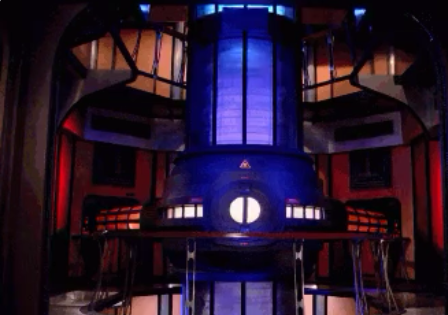A warp drive is a fictitious faster-than-light (FTL) spacecraft propulsion system in many science fiction works, most notably Star Trek. A spacecraft equipped with a warp drive may travel at speeds greater than that of light by many orders of magnitude. In contrast to some other fictitious FTL technologies such as a jump drive or hyperdrive, the warp drive does not permit instantaneous travel between two points, but rather involves a measurable passage of time which is pertinent to the concept. Spacecraft at warp velocity would continue to interact with objects in “normal space.” The general concept of “warp drive” was introduced by John W. Campbell in his 1931 novel Islands of Space.[1]
Einstein’s theory of special relativity states that energy and mass are interchangeable, and speed of light travel is impossible for material objects that weigh more than photons. The problem of a material object exceeding light speed is that an infinite amount of kinetic energy would be required to travel at exactly the speed of light. This can theoretically be solved by warping space to move an object instead of increasing the kinetic energy of the object to do so.[2] Such a solution to the faster than light travel problem leads to two directly opposite approaches to light-speed travel in science fiction: in the first, spaceships themselves are brought to light speed and beyond; in the second, not-yet-local space itself is made to come to the ship while the ship moves at sub-light speeds.


